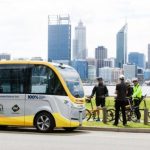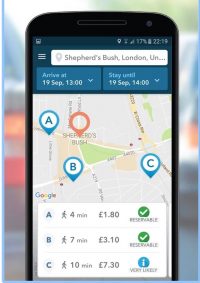Are happier citizens making Singapore a smart city leader?
Are happier citizens making Singapore a smart city leader?

While many governments are recent converts to the smart city ideology, Singapore has been a movement leader for decades. And the Asian city-state is about to ramp up its efforts with its soon-to-be-unveiled Smart Nations strategy.
The GovTech site features a lengthy discussion with Singapore’s CIO Chan Cheow Hoe which serves as a master-class in smart city planning.
Over the years Chan says one of Singapore’s biggest revelations is that effective smart city programs must be first and foremost customer-centric.
“The whole idea is to first establish a relationship…and a point of trust between government and the people,” he says.
“The second thing — that I think is very important — is the concept of what we call ‘frictionless’ government,” Chan says. “What we are trying to do is to take out all this unnecessary friction as much as possible, and this goes back to the customer experience.”
Singapore’s lengthy smart city history includes such projects as traffic congestion analytics, waste monitoring and sustainable buildings.
Driving the city-state’s early smart city adoption was its need to maximize the use of its compact 427 square miles of geography to best serve its bustling population of 5.6 million.
One of the biggest smart city challenges faced by Singapore, and indeed all global governments, is modernizing outdated legacy IT systems. Legacy systems often hinder shifting infrastructure to the cloud and frequently dampen innovative thinking.
See also: NuTonomy cabs ready for hailing in Singapore
However, Singapore tackled this familiar bugbear by focusing its efforts on improving customer service while minimizing service disruptions to its core systems.
“We started splitting up what we call our system of records with the system of engagement,” says Chan. “We made the legacy system just a simple system of records. We shut off the front end and we essentially built a funnel on top of it.”
He says this allowed Singapore to be agile in building front end customer services while leaving the legacy systems relatively intact.
“It decreases the need for the legacy systems significantly, and over a period of time allows resources to be dedicated to the customer experience,” he says.
These improvements allowed Singapore to build up a trust-based relationship with its citizens through its digitalID strategy. This strategy focused on breaking various pools of data out of their silos to remove much of the friction in government-citizen interactions, manifesting in such projects as MyInfo.
Singapore has data issues sorted out
MyInfo pulls data on citizens from various departments into a useable pool of verified information.
“Instead of you bringing your ID card and everything to show these things, you don’t have to do these unnecessary transactions anymore because the data is pulled directly,” he says. “This data doesn’t belong to the government — the data still belongs to you as an individual — but you have the right to consent to give that data to somebody else.”
Singapore is presently embarking on its ambitions Smart Nation initiative which will include the deployment one of the most sprawling sensor and camera networks a city has ever seen.
And with such a vast array of sensors, the obvious issue of how to secure such expansive Internet of Things (IoT) technology.
Chan says securing IoT is a running battle that no one can solve with a silver bullet.
“The question for us now is really about categorizing systems. There are highly secure systems we will spend a lot of money protecting,” says Chan. “For the rest, it is what it is.”
“If something happens to it we are just going to accept the risk and move on, as long as the risk is not so big that it actually cripples certain critical services in the country.”
The post Are happier citizens making Singapore a smart city leader? appeared first on ReadWrite.
(14)














